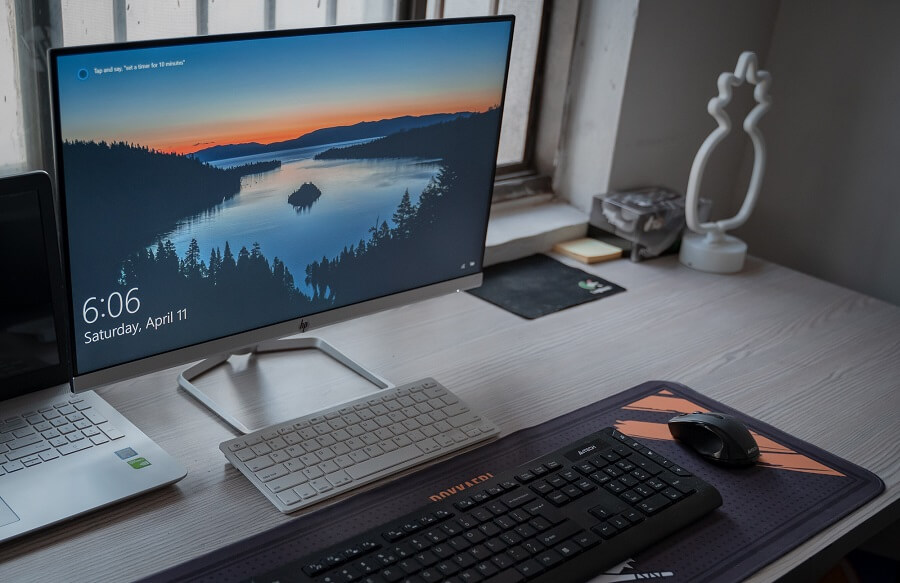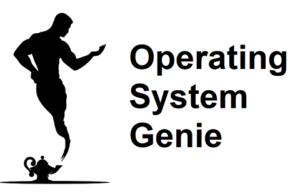In the Windows Task Manager is possible to see what your RAM usage is. It’s normal for the RAM usage to go up and down, as well as, flat line within a range. In this article, I will answer if it’s normal for a PC to use 50% memory.
It is normal for a PC to be using 50% memory (RAM). If a computer has 8GB of RAM or less, it’s typical for RAM usage to be at 50% when idle.
Whereas, if your PC has 16GB of RAM or more, 50% RAM usage when idle is high and indicates an issue. But, is normal is multiple programs are open such as a large number of Google Chrome tabs, and a graphics intensive game.
Below, I will explain:
- What RAM usage should be – for 4GB, 6GB, 8GB, 16GB, or 32GB of RAM
- How to know if you need more or faster RAM
- How to fix 50% RAM usage
Let’s get into it!
What Should Memory Usage Be When Idle

Here’s a reference table that gives some average figures for what your RAM usage should be when idle:
| Amount of RAM on PC | Normal RAM usage when idle |
| 4 GB | 80%+ |
| 8 GB | Less than 50% |
| 16 GB | Less than 30% |
| 32 GB | Around 5% |
The amount of RAM your PC has can be viewed in the Windows Task Manager. In the same place where it shows your RAM usage percentage. Interestingly, there is a somewhat hidden setting in Windows that can be used to free up 1GB or RAM instantly. It’s called Sysmain, and used to be called Prefetch.
In short, it loads files from frequently used programs onto the RAM and keeps them there permanently, taking up 1GB of RAM. I personally disabled it based on many reports of people stating it will increase performance.
I summarized the results on my mid-range laptop with a 10th gen 13 processor, running Windows 11.
READ MORE >> Does disabling Sysmain improve performance
The amount of RAM your PC has depends on what your use your computer for. I personally have 8GB of RAM, and find my computer fast enough. I can see how it can be much faster.
But, I mostly use my PC for work, and am a hobbyist gamer. When gaming it is very fast even on the highest graphics settings running only an integrated graphics card. Here’s a table that shows how much RAM is typical for PCs, both laptops and desktops:
| RAM | What the computer should be used for |
| 4 GB | Not recommended |
| 8 GB | Work, school, university, hobby computer, decent gaming performance |
| 16 GB | Gaming and resource intensive apps like video editing software |
| 32 GB | Gaming and resource intensive apps like video editing software |
Different programs use up different amount of the RAM on your PC. For example, one Google Chrome tab uses less than a graphics intensive game like Fortnite.
How the Amount of RAM Effects Ram Usage
Here’s a breakdown of roughly what the RAM usage is for the different programs you can have open on a computer:
| Open in the background | 8GB | 16GB | 32GB |
| Google Chrome tab | 2% RAM usage | 1% RAM usage | 0.5% RAM usage |
| Application like Skype | 20% RAM usage | 1% RAM usage | 0.5% RAM usage |
| Graphics intensive game | 100% RAM usage | 70% RAM usage | 50% RAM usage |
| Video editing software | 100% RAM usage | 70% RAM usage | 50% RAM usage |
| 10 Google Chrome tabs | 20% RAM usage | 10% RAM usage | 5% RAM usage |
Another key component is the graphics card (GPU). As you may know, it’s widely accepted that getting a dedicated graphics card, when your PC has an integrated graphics card will significantly increase game performance, and frames per second (FPS).
I was curious how the amount of RAM a PC has affect the GPU usage. Here’s a table that shows the results of an independent test:
| In game GPU usage | Average FPS | |
| Fortnite – 8 GB | 50% to 80% | 300 |
| Fortnite – 16 GB | 50% to 80% | 300 |
| Fortnite – 32 GB | 50% to 70% | 300 |
As you can see, the amount of RAM a computer has, has virtually no effect on the average FPS, and the GPU usage percentage.
READ MORE >> Does low RAM affect GPU performance
How to Fix 50% RAM Usage
When your RAM usage that is outside of the average ranges shown in the tables above, it means that:
- You have unwanted programs running in the background
- Your PC has a virus or malware
- There is a background process that is running temporarily (such as a Windows update)
Each of these are very easy to look into. Start by opening up the Task Manager, and identifying any programs are using the most RAM percentage. You can sort them by RAM usage by clicking the arrow at the top.
If some are these are program you don’t use force close them. Then disable them on start up. Here’s a video that shows how to do that:
Next, run an anti-virus and anti-malware program. The most popular malware software is MalwareBytes and is completely free. It can be a program such as iTunes is downloading an update if you use iOS device. Or, a Windows automatic update is downloading.
How to Know If You Need More or Faster RAM
Provided, you bought your computer pre-built from a store. Like a full laptop or desktop computer, the RAM will almost always be perfectly matched to the other components. And getting more RAM will only provide a minor performance improvement.
The minimum amount of RAM for the average person is 8GB. But, 16GB over the next 5 years – 2023 to 2028 – will become the standard. With serious gamers 16GB is the most common.
Most gamers agree 8GB is sufficient, and 16GB being a nice to have. Also, 16GB futureproofs your PC. Also for people who do work that requires multi-tasking and a lot of a computers resources such as streaming or video editing, 32GB makes the most sense.
The RAM speed is a factor in a computers performance. But, it is very minor. As you may be aware, the naming convention for RAM is universal. There is DDR, DDR2, DDR3, DDR4, and DDR5.
Every 5 years a new version of RAM is released. DDR6 is projected to be released in 2025. As DDR5 the most recent version of RAM was released in 2020. Here’s a table that shows when each version of RAM was released:
| Type RAM | Year Released | Clock rate (speed) |
| DDR | 1998 | 200 MHz |
| DDR2 | 2003 | 533 MHz |
| DDR3 | 2007 | 1066 MHz |
| DDR4 | 2014 | 1600 MHz |
| DDR5 | 2020 | 3600 MHz |
After a new version of RAM is released, it’s very hit and miss whether a computer will have the latest version of RAM. For example, there are still MANY brand new PCs for same with DDR4 RAM, which was released about 3 years ago.
But, overall, getting faster RAM increases performance by around 5%. So, typically isn’t worth it. And it’s best to wait until you get a new computer. Or upgrade the motherboard to replace your RAM with a newer version when it comes out.
